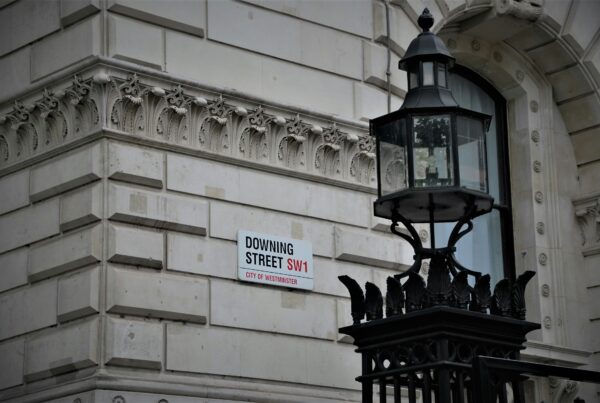Bright Blue, the independent think tank for liberal conservatism, has today published a major new report commissioned by its high-profile cross-party, cross-sector Tax Commission, entitled Home truths: options for reforming residential property taxes in England, proposing to replace England’s current distortive and regressive property taxes with an Annual Proportional Property Tax (APPT) to help achieve government aims of levelling up and delivering net zero.
The report, authored by two leading academics Professors Paul Cheshire and Christian Hilber, comprehensively assesses and ranks variations of two main alternatives to replacing Stamp Duty (SDLT) and Council Tax (CT) – an Annual Proportional Property Tax (APPT) and Land Value Tax (LVT), both with a tax exemption and green offsets – against several economic and political criteria, including: revenue raising; efficiency; equity; simplicity; incentives for building housing; automatic stabilisation; public acceptability; ease of transition; and, alignment with key government objectives.
Backed by leading figures from all parliamentary political parties, the report finds that a variation of the APPT would be best on both economic and political grounds to completely replace the flawed English property tax system of SDLT and CT.
Ryan Shorthouse, Chief Executive of Bright Blue, commented:
“The current property taxation system in England is regressive and distortive. It provides significant advantages to those who have – or are from families with – substantial wealth, and is quite punishing to those with relatively little.
An annual proportionate property tax system would change that, making property tax liabilities much more manageable for those from modest backgrounds and areas.
If the Government is serious about levelling up the country, it needs to focus on reforming this country’s taxation, not just spending. Now is the ideal time for the Government to introduce difficult, radical reforms to support people and places that have struggled in recent decades. If it doesn’t, it will have squandered an ideal political opportunity to really make a difference in those communities.”
Andrew Dixon, Founder of Fairer Share, commented:
“The case for a proportional property tax is becoming harder and harder for our politicians to ignore. Fairer Share has already shown how 76% of households across England would be better off under PPT. This excellent contribution by Bright Blue further strengthens the case for reform, making clear that a new tax would be considerably fairer than the current system and that annual revaluations should pose no barrier to implementation.
As the evidence in favour of PPT piles up it should come as no surprise that well-respected political figures from across the Conservatives, Labour and Liberal Democrats are supporting this important policy reform. In the coming months we look forward to seeing more politicians from all parties supporting the drive to tax homes fairly in order to make a meaningful difference to people’s lives.”
The policies in this report to replace the existing English property tax system are:
- Recommendation one: An annual proportionate property tax (APPT) on the current capital value of houses with a tax exemption for properties worth up to £50,000 and a 25% surcharge for second home owners.
Liability to pay would be with owners, not occupants. A single low tax threshold of initially £50,000 should be introduced, set to rise with house prices over time. A 25% surcharge on second homes should be included.
The APPT should be calculated by the District Valuer Services via annual property revaluations using statistical modelling, but with a three-or five-year rolling window to smooth annual changes. This should be a perfectly practical and cheap method, thanks to advances in data availability from the Land Registry, modelling methods and computing power. A modelling-based approach to property valuations has been applied in at least 15 different countries. There should be an appeals process so that house owners could appeal against their valuations.
The APPT should be phased in to smooth the transition to a new system, and there should be a provision, subject to paying interest, to defer tax payments for ‘asset rich and cash poor’ individuals until the point at which properties are sold or an inheritance takes place.
- Recommendation two: The national government and local authorities to impose separate APPT tax rates.
A share of the revenue of the APPT should go towards the national government and a share should go towards LAs. The share going to national government should offset the loss to national revenues of the abolition of SDLT. This revenue neutral national annual tax rate is, following 2019 SLDT receipts, 0.11% for primary homes and 0.14% for second homes
Local authorities should be free to set their local tax rates independently of national government and keep all of the revenue to spend on local public services, such as local refuse collection, recycling, local parking, environmental improvements, local transport infrastructure and services, maintenance of local beauty sites or parks, local libraries, and local museums. This will generate tax incentives at the local level to permit new residential development and variety in the range of local services communities can offer.
- Recommendation three: Green offsets applied to the APPT to improve energy efficiency.
The APPT should offer allowances against the house owners’ liability for more energy efficient houses and an additional weighting on the liability for the least energy efficient houses. The existing system of Energy Performance Certificates (EPCs) should be extended to offer allowances against liability for APPT for more energy efficient homes. Unlike previous schemes such as the Green Deal and Green Homes Grant, there would be no application process and rates could be adjusted in the light of progress made towards reducing CO2 emissions from the residential sector.
- Recommendation four: A Development Levy set at 20% of the realised market price of newly constructed houses.
This Development Levy should be charged on property developers for the market price of new developments. This proposal has similarities with the Infrastructure Levy (IL) set out in the recent White Paper from the Ministry of Housing, Communities and Local Government (MHCLG), which will replace the current taxation on property developers consisting of Section 106 Agreements and the Community Infrastructure Levy (CIL). In contrast to the IL, with the Development Levy both rates and the way they are spent will be required to be uniform across the country and determined by national legislation.
The revenue would go to local authorities to be spent only on local infrastructure; local public services; and, social or ‘affordable’ housing. Since local communities would be transparently compensated for accepting new development, the current binding constraint on building or the power of ‘NIMBYism’ would be reduced.
Finally, the report devises five plausible scenarios to explore the possible distributional implications of the central reform to replace CT and SDLT in England with an APPT:
- National APPT to replace SDLT + local APPT set at a uniform rate across all LAs and yielding in total the same revenue as CT does at present.
- National APPT to replace SDLT + local APPT set at a rate in each LA so that the local APPT yields the same revenue for each LA as CT does at present.
- National APPT to replace SDLT + local APPT set at a rate in each LA so that in those LAs where the median house price is greater than the overall national median (‘property richer LAs’) the APPT is set to yield 10% more revenue than the CT does at present and in those in which the median house price is less than the English median (‘property poorer LAs’) is set to yield 10% less revenue than at present.
- National APPT to replace SDLT + local APPT set at a rate in property richer LAs to yield 20% more revenue and in property poorer LAs 20% less revenue than at present.
- National APPT to replace SDLT + local APPT set at a rate in property richer LAs to yield 10% less revenue and in property poorer LAs 10% more revenue than at present.
The report estimates the distributional implications in two ways. First, for scenario 1), by showing the proportion of English LAs where a typical resident would pay less overall in expected property tax, and the proportion where a typical resident would pay more overall.
The findings are:
- 78% of all English LAs would see the typical resident face a lower expected property tax liability post reform, whereas those who face a higher local tax burden per capita would be a typical resident in Greater London and the South East of the country.
Second, for all scenarios, by simulating the impact on expected property tax payments before and after the proposed reform for a range of representative houses in specific LAs across England. One LA from each decile was selected to represent the whole range of the English housing market geography: Chelsea and Kensington; Guildford; West Berkshire; Basildon; Bedford; Cheshire East; Redditch; Leeds; Newcastle upon Tyne; and, Burnley. The three different types of property chosen in these ten LAs are: a property valued at the median price in an LA as of December 2019; 50% more than the median; and, 25% less than the median.
The findings are:
- There is a pattern of more winners in poorer LAs and for less expensive houses. Combining the results of all the different scenarios, of the lowest priced houses in the ten representative LAs, 76% are winners; for the median priced houses, 48% are winners; and, for the most expensive houses only 24% are winners. When interpreting these results, it is worth bearing in mind that there tends to be relatively few expensive (50% more than the median price) homes in a given LA, and many less expensive (25% less than the median price) ones.
- In the lowest priced housing market, Burnley, the cheapest houses are winners in all scenarios and houses with a price at the market median also gain in all scenarios, except those in which LA revenue is kept constant (Scenario 2)) or where we assume property rich LAs reduce their taxation by 10% and property poor LAs increase it by 10% (Scenario 5)).
Professor Paul Cheshire, Emeritus Professor of Economic Geography at the London School of Economics and report co-author, commented:
“With these reforms, we have aimed to strike a balance between what is economically efficient yet also politically feasible. Moving to an APPT fulfils both of these criteria, as well as having a role to play in addressing regional inequalities. With the addition of Green Offsets and a Developer Levy, these reforms will result in a system of property taxation that is fairer, greener, helps deliver more new homes and is simpler and more transparent than the one we have now.”
The Rt Hon David Gauke, Former Treasury Minister, commented:
“No one could argue that our current system of property taxes is ideal and this paper makes a powerful case for fundamental reform on the grounds of economic efficiency and fairness. This is a valuable contribution to the important debate on how we should reform our property taxes.”
The Rt Hon Dame Margaret Hodge MP, Former Chair of the Public Accounts Committee, commented:
“Our existing system of property taxation in the UK is deeply flawed and highly regressive. This timely paper from Bright Blue lays out a credible proposition for how we might tackle the inequity of this system. These recommendations are worthy of serious debate in the hope that a wide consensus can be formed on how to solve the intractable problem of taxing property.”
The Rt Hon Lord Willetts, Former Minister of State for Universities and Science, commented:
“This important report brings out the need to reform Britain’s regressive property taxes. They fall most heavily on poorer parts of the country so reform should be an important part of the levelling up agenda.”
The Rt Hon Sir Vince Cable, Former Secretary of State for Business, Innovation, and Skills, commented:
“The arguments for taxing property and land rather than labour and capital investment are well established. But the politics are very difficult. The unfairness and arbitrariness of the current property tax regime, through council tax, are however so egregious that reform is urgently required. An annual proportional property tax is much more satisfactory and the practical questions have now been thought through.”
The Rt Hon Baroness Bennett of Manor Castle, Former Leader of the Green Party, commented:
“I welcome this exploration of our current deeply regressive and dysfunctional system of council tax and stamp duty. The Green Party calls for a land value tax – one area of policy, among few, that we share with Winston Churchill – but what’s needed above all is discussion and campaigning to put pressure on the government to deal with the current archaic, damaging system.”




